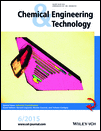Effect of Seeding and pH Conditions on the Size and Shape of Au Nanoparticles in Reduction Crystallization
Abstract
Efficient and simple methods for gene integration into various plants have been studied by many researchers. The particle gun method using fine metal particles is one of the most potent technologies. However, it is difficult to control the particle size distribution and shape of the metal particles and, thus, to design and create adequate particles of suitable quality for the gene-supporting media. Here, reduction crystallization of nanometer- and submicron-sized Au was investigated in order to clarify the effects of the seeding and reaction conditions on the sizes and shapes of Au particles. The seed size has an influence on the surface roughness of the Au nanoparticles. Experiments to form Au particles were also performed using pH-controlled ascorbic acid. The pH has a great influence on the size and shape of nano/submicron Au particles and the mechanism of reduction crystallization.




